April 28, 2016: Weather Station Inveruno(MI)
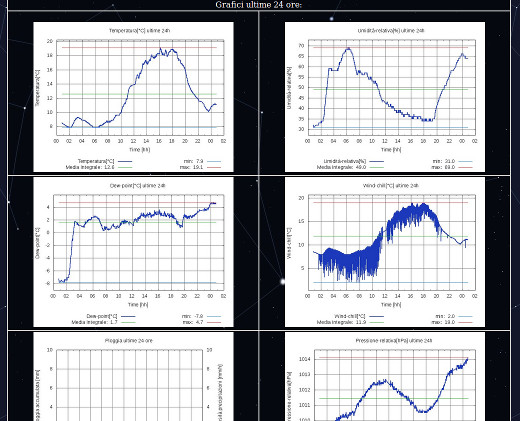
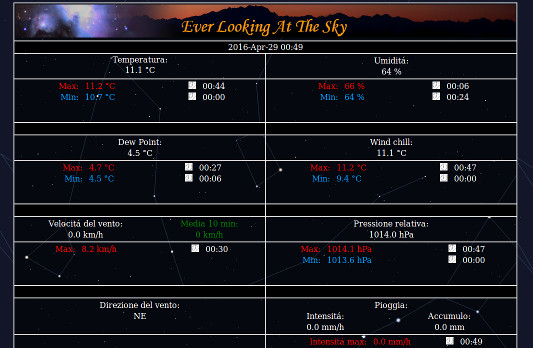
February 25, 2014: Rosette Nebula
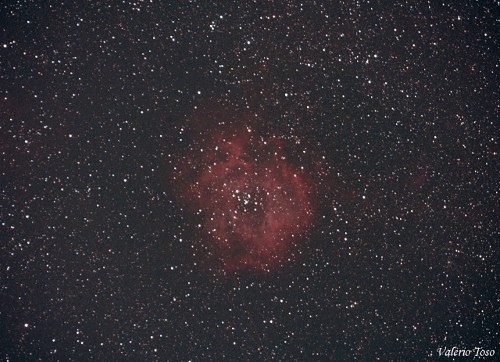
Above:
"Rosette Nebula"
The
Rosette Nebula (also known as
Caldwell 49)
is a large, circular H II region located near one end of a giant
molecular cloud in the Monoceros region of the Milky Way Galaxy. The
open cluster NGC 2244 (Caldwell 50) is closely associated with the
nebulosity, the stars of the cluster having been formed from the
nebula's matter.
http://it.wikipedia.org
January 2014: New Interactive PhotoGallery
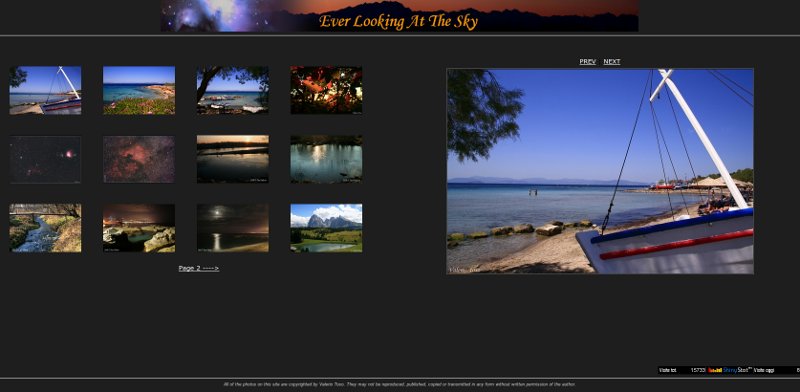
October
1, 2013: Sadr Region & Crescent Nebula
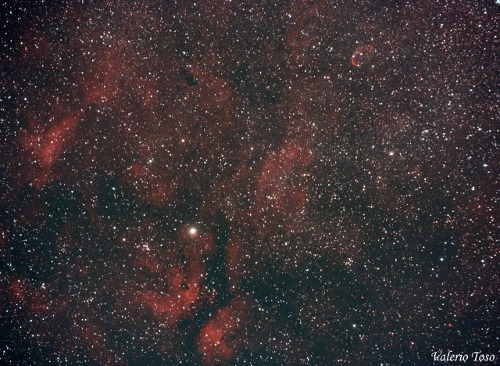
Sopra:
"Nebulosità attorno a Sadr e Crescent Nebula"
The Sadr region, or IC 1318, is the diffuse emission nebula surrounding Sadr or Gamma Cygni. Sadr lies in the center of Cygnus's cross. The Sadr region is one of the surrounding nebulous regions; others include the Butterfly Nebula and the Crescent Nebula. It contains many dark nebulae in addition to the emission diffuse nebulae.
Sadr itself has approximately a magnitude of 2.2. The nebulous regions around the region are also fairly bright.
http://it.wikipedia.org
February
15, 2011: Orion
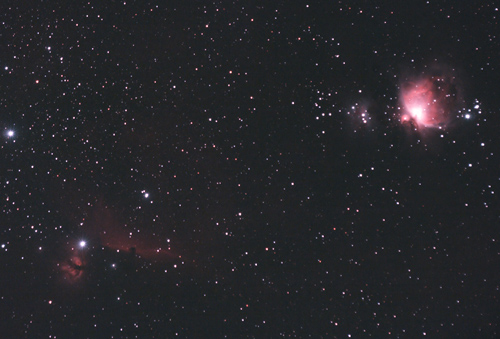
Sopra:
"Cintura e spada di Orione"
La costellazione
di Orione è
famosa per contenere il più noto e studiato complesso nebuloso del
cielo, in cui hanno luogo importanti fenomeni di formazione stellare;
esso ospita la gran parte degli oggetti più conosciuti della
costellazione.
A sud della Cintura di Orione c'è la sua spada,
che consiste delle stelle multiple θ1 e θ2 Orionis,
chiamate il Trapezio, e la vicina Nebulosa di Orione
(M42). La nebulosa è un oggetto molto brillante, che già ad occhio nudo
può essere distinta come di natura ben diversa da una stella. Tuttavia
per poterla individuare a volte è opportuno guardare un punto del cielo
vicino a dove se ne suppone la presenza per farla "saltare" all'occhio
imediatamente. Con un telescopio o meglio ancora un binocolo si possono
osservare le sue nubi di gas luminosi, le stelle giovani e le nubi di
polvere che la compongono. La Nebulosa De Mairan (M43),
visibile poco a nord, fa parte di questo insieme.
Poco a sud della della Cintura di Orione, nei
pressi di
ζ Orionis, si trova una nebulosa oscura, scoperta nel 1655 non
visibile ad occhio nudo, la celeberrima Nebulosa Testa Di Cavallo
(B33); si tratta di un addensamento oscuro che si sovrappone alla linea
di vista di una nebulosa chiara, catalogata come IC 434 e situata ad est
di σ Orionis.
http://it.wikipedia.org

